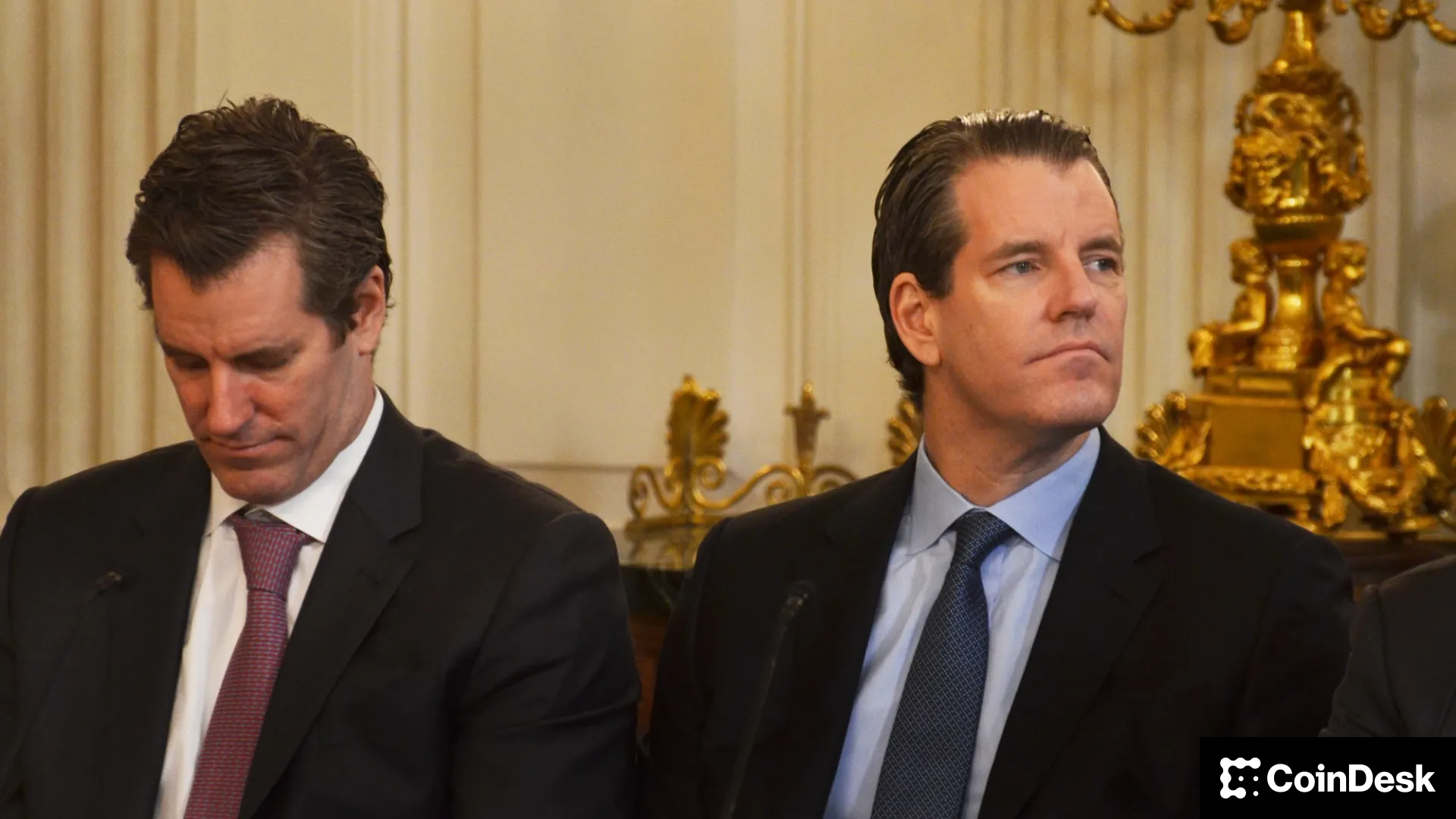Uncategorized
Hive’s Frank Holmes on Expanding Bitcoin Mining in Paraguay

Frank Holmes has had a long career as a money manager: financing gold mining companies; getting involved in the creation of gold royalty companies; developing financial products for the airline industry — all of this with U.S. Global Investors (GROW), the publicly-traded asset management firm he’s been leading since 1989.
He’s also the chairman of HIVE Blockchain Technologies (HIVE), a bitcoin mining company with a $345 million market capitalization and a rapidly expanding footprint in Paraguay, thanks to a recent deal in which the firm acquired facilities previously owned by another miner, Bitfarms. The firm was born, he said, after he attempted to launch a spot bitcoin exchange-traded fund (ETF) in 2017.
HIVE has been green from the get-go. Its first facility used geothermal energy in Iceland; another used hydro-power in Sweden, only 100 kilometers south of the Arctic Circle. Now, the company expects to have roughly 430 megawatts (MW) of infrastructure up and running by the third quarter of 2025 — meaning enough energy to power a city of 86,000 homes.
Holmes will be speaking at the BTC & Mining Summit at Consensus 2025, in Toronto on May 14-15.
In the lead-up to the event, Holmes shared his thoughts about HIVE’s place within the broader mining industry, the company’s decision to recycle its GPUs for AI purposes, and what the future holds.
This interview has been condensed and edited for clarity.
CoinDesk: HIVE has been repurposing some of its GPUs for AI. Can you tell me about that?
Frank Holmes: At one time we had 130,000 AMD chips and we were mining ether (ETH). We were about 6% of the world’s ether mining and it was very profitable. When that went away [with Ethereum’s transition to Proof-of-Stake in 2022], we had this expertise in GPU chips and we replaced a lot of our AMD chips with Nvidia chips. That allowed us to start going down the AI path.
The difference between a basic ASIC miner and Nvidia chips is like driving a Bronco and a Ferrari. The delicacy of the motor, the engines, all the gearing that goes into a high performance car — all of that relates much more to a GPU. When Antminers S21 Pros show up, it takes us six hours to unwrap them and plug them in. When the Nvidia chips show up, like an H100, it’s six weeks before you’ve built the brain and it’s working. So it’s a completely different skill set.
When you’re building infrastructure for bitcoin mining, you’re spending a million dollars per megawatt of electricity. When you go into high performance computing (HPC), the facilities need so much redundancy that you spend $10 million per megawatt. That’s excluding the equipment. You’ve got much higher logistical engineering requirements, and you’ve got much higher capital expenses.
When you want to source energy for bitcoin mining, you can take variable energy, and the real key part is the cost of the energy. In Sweden, we can go from 30 megawatts to three megawatts in 15 seconds. So we’re able to give back energy, or take it on.
When you’re HPC, you have to be up all the time, and so you need to have this backup of generators, batteries. Stability of energy is much more critical for HPC than it is for bitcoin mining. So you have a matrix that you’re trying to play with.
Does the Trump administration’s tariff strategy impact your operations?
We listen to the U.S. because it’s so important for branding and liquidity. But we never did anything in the U.S. because we’re always concerned about the overreach of regulatory agencies in Washington. They basically weaponized the auditors to go after anyone that was in crypto. So we said, ‘Let’s just stay neutral in this jurisdiction.’ Then Trump won, so we decided to move our head office over. That’s strategic, because if your head office is in the U.S., you qualify for many of the various indexes. We don’t have mining operations in the U.S. yet.
But you’ve expanded significantly in Paraguay.
I think what happened in Paraguay to Bitfarms is that they went through some distraction with their CEO [left]. There was a vacuum. Then Riot (RIOT) tried to come in to buy and control them. During that turmoil period, the Paraguayan government put a tariff on bitcoin miners, which was really very weird, but it happened, and it will drop away, I think, next year. It was all unsettling for the new CEO, and he wanted to pivot to the U.S. So they merged with Stronghold (SDIG) to basically become an American company, like a reverse takeover.
They still have 80 megawatts of electricity in Paraguay, but most of the operations we’re now taking over. We’re finishing the construction, and we’re very excited about it. We already have a few machines working. We have the biggest growth profile in 2025 of all the bitcoin miners. We have not done any of these funky convertible debentures to buy bitcoin. Most of them paid much higher prices. No, we’ve not done that because we know how volatile it can be. Every time everyone starts doing this binge debt buying — well, before, in 2021 it was all for buying mining equipment. This time, it’s all for buying bitcoin. Bitcoin then goes to a correction, and they all get strangled. We just don’t want to be in that position.
We really see the opportunity in Paraguay. It has the largest dam in the Western hemisphere, shared 50/50 with Brazil. It’s 14 gigawatts and like eight kilometers long. It’s so immense. If Paraguay doesn’t use the electricity, then Brazil gets to keep it. Well, Bitcoin miners don’t do that. We help build out their infrastructure, and they get paid U.S. dollars every month. So it’s a win-win for the Paraguayan government and it’s a win-win for HIVE shareholders, because we want to stay focused on green energy.
Are there other jurisdictions you’re looking to expand to?
We’re looking at proposals coming from East Africa. Ethiopia in particular has a lot of stranded electricity. Some of the other miners have already gone into that area. They got all this cheap money from the World Bank and other institutions, and they built the dams, but then they didn’t build the power lines throughout the economy. It’s a big expense. We have a very clear vision to go from 6 EH/s to about 25 EH/s in the next nine months.
How do you see the mining industry’s situation right now?
I don’t think it’s healthy. You have to be cognizant that there’s a change for a lot of the big miners. Major U.S. corporations are not really into mining expansion. They’re predominantly focused on adding bitcoin to their balance sheet. They’re all emulating Michael Saylor’s business model. But for Bitcoin’s ecosystem to function, you need to have growth in the nodes. You need to have growth in mining operations so we become even more decentralized. Some of the companies should be probably investing more in the Lightning Network or in Ordinals infrastructure to differentiate themselves.
What Bitdeer (BTDR) is doing [with ASIC manufacturing] is really smart. The founder was also a co-founder of Bitmain. So coming in with a new piece of technology which is very energy efficient in terms of joules consumed, I think that’s very good and competitive for the capital markets.
Bitcoin miners are going to go through a process that happened to the gold miners. When the GLD came out for bullion, all of a sudden there was a separation — gold stocks versus the GLD. This century, gold bullion has outperformed the S&P 500 by a wide margin. But only the quality gold stocks, the royalty gold stocks, have actually outperformed. One of the things that HIVE has always had is the old royalty model of high revenue per employee, so that we can deal with these down drafts and not have to go through this panic of big layoffs.
Business
Crypto Trading Firm Keyrock Buys Luxembourg’s Turing Capital in Asset Management Push

Crypto trading firm Keyrock said it’s expanding into asset and wealth management by acquiring Turing Capital, a Luxembourg-registered alternative investment fund manager.
The deal, announced on Tuesday, marks the launch of Keyrock’s Asset and Wealth Management division, a new business unit dedicated to institutional clients and private investors.
Keyrock, founded in Brussels, Belgium and best known for its work in market making, options and OTC trading, said it will fold Turing Capital’s investment strategies and Luxembourg fund management structure into its wider platform. The division will be led by Turing Capital co-founder Jorge Schnura, who joins Keyrock’s executive committee as president of the unit.
The company said the expansion will allow it to provide services across the full lifecycle of digital assets, from liquidity provision to long-term investment strategies. «In the near future, all assets will live onchain,» Schnura said, noting that the merger positions the group to capture opportunities as traditional financial products migrate to blockchain rails.
Keyrock has also applied for regulatory approval under the EU’s crypto framework MiCA through a filing with Liechtenstein’s financial regulator. If approved, the firm plans to offer portfolio management and advisory services, aiming to compete directly with traditional asset managers as well as crypto-native players.
«Today’s launch sets the stage for our longer-term ambition: bringing asset management on-chain in a way that truly meets institutional standards,» Keyrock CSO Juan David Mendieta said in a statement.
Read more: Stablecoin Payments Projected to Top $1T Annually by 2030, Market Maker Keyrock Says
Business
Crypto Trading Firm Keyrock Buys Luxembourg’s Turing Capital in Asset Management Push

Crypto trading firm Keyrock said it’s expanding into asset and wealth management by acquiring Turing Capital, a Luxembourg-registered alternative investment fund manager.
The deal, announced on Tuesday, marks the launch of Keyrock’s Asset and Wealth Management division, a new business unit dedicated to institutional clients and private investors.
Keyrock, founded in Brussels, Belgium and best known for its work in market making, options and OTC trading, said it will fold Turing Capital’s investment strategies and Luxembourg fund management structure into its wider platform. The division will be led by Turing Capital co-founder Jorge Schnura, who joins Keyrock’s executive committee as president of the unit.
The company said the expansion will allow it to provide services across the full lifecycle of digital assets, from liquidity provision to long-term investment strategies. «In the near future, all assets will live onchain,» Schnura said, noting that the merger positions the group to capture opportunities as traditional financial products migrate to blockchain rails.
Keyrock has also applied for regulatory approval under the EU’s crypto framework MiCA through a filing with Liechtenstein’s financial regulator. If approved, the firm plans to offer portfolio management and advisory services, aiming to compete directly with traditional asset managers as well as crypto-native players.
«Today’s launch sets the stage for our longer-term ambition: bringing asset management on-chain in a way that truly meets institutional standards,» Keyrock CSO Juan David Mendieta said in a statement.
Read more: Stablecoin Payments Projected to Top $1T Annually by 2030, Market Maker Keyrock Says
Business
Gemini Shares Slide 6%, Extending Post-IPO Slump to 24%

Gemini Space Station (GEMI), the crypto exchange founded by Cameron and Tyler Winklevoss, has seen its shares tumble by more than 20% since listing on the Nasdaq last Friday.
The stock is down around 6% on Tuesday, trading at $30.42, and has dropped nearly 24% over the past week. The sharp decline follows an initial surge after the company raised $425 million in its IPO, pricing shares at $28 and valuing the firm at $3.3 billion before trading began.
On its first day, GEMI spiked to $45.89 before closing at $32 — a 14% premium to its offer price. But since hitting that high, shares have plunged more than 34%, erasing most of the early enthusiasm from public market investors.
The broader crypto equity market has remained more stable. Coinbase (COIN), the largest U.S. crypto exchange, is flat over the past week. Robinhood (HOOD), which derives part of its revenue from crypto, is down 3%. Token issuer Circle (CRCL), on the other hand, is up 13% over the same period.
Part of the pressure on Gemini’s stock may stem from its financials. The company posted a $283 million net loss in the first half of 2025, following a $159 million loss in all of 2024. Despite raising fresh capital, the numbers suggest the business is still far from turning a profit.
Compass Point analyst Ed Engel noted that GEMI is currently trading at 26 times its annualized first-half revenue. That multiple — often used to gauge whether a stock is expensive — means investors are paying 26 dollars for every dollar the company is expected to generate in sales this year. For a loss-making company in a volatile sector, that’s a steep price, and could be fueling investor skepticism.
-

 Business11 месяцев ago
Business11 месяцев ago3 Ways to make your business presentation more relatable
-

 Fashion11 месяцев ago
Fashion11 месяцев agoAccording to Dior Couture, this taboo fashion accessory is back
-

 Entertainment11 месяцев ago
Entertainment11 месяцев ago10 Artists who retired from music and made a comeback
-

 Entertainment11 месяцев ago
Entertainment11 месяцев ago\’Better Call Saul\’ has been renewed for a fourth season
-

 Entertainment11 месяцев ago
Entertainment11 месяцев agoNew Season 8 Walking Dead trailer flashes forward in time
-

 Business11 месяцев ago
Business11 месяцев ago15 Habits that could be hurting your business relationships
-

 Entertainment11 месяцев ago
Entertainment11 месяцев agoMeet Superman\’s grandfather in new trailer for Krypton
-

 Entertainment11 месяцев ago
Entertainment11 месяцев agoDisney\’s live-action Aladdin finally finds its stars




